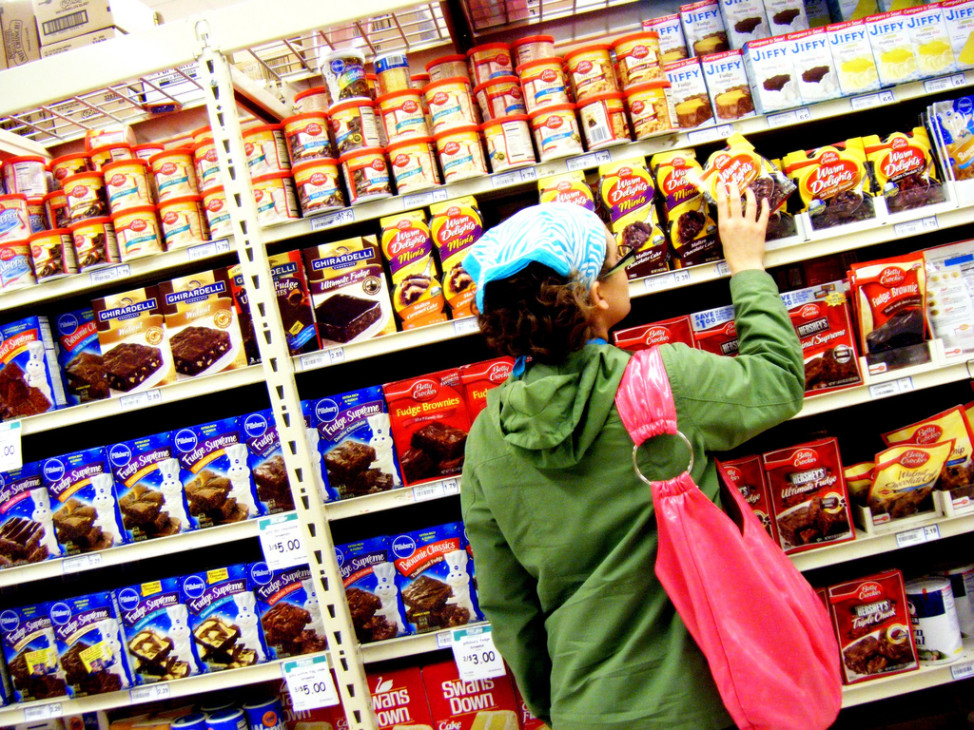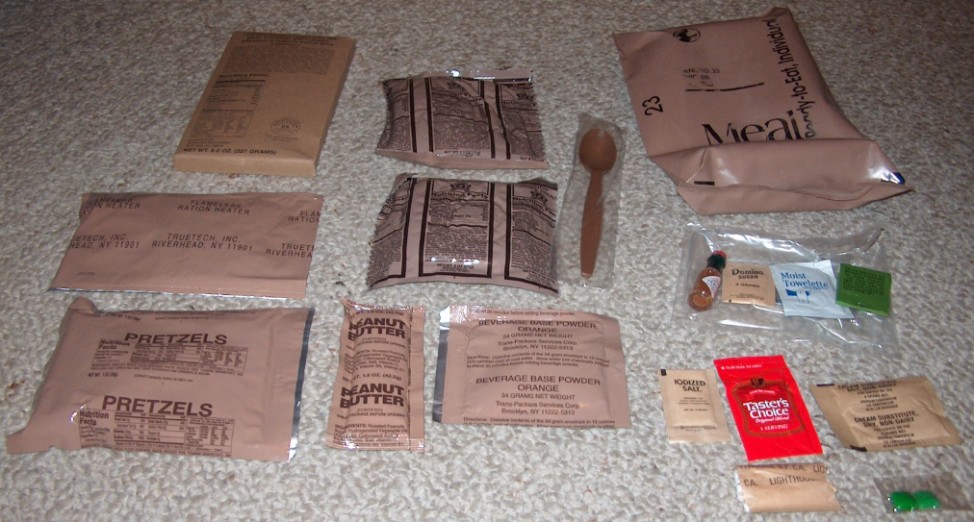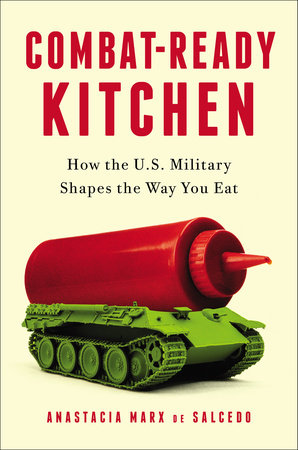
Today’s cake mixes are the result of the U.S. military’s desire to send a nonperishable food dessert product to army cooks in camps overseas. (Photo by Flickr user Fuschia Foot via Creative Commons license)
Much of the food Americans buy at the grocery store has a secret military history.
People in the United States eat more processed foods than anyone else in the world; foods like energy bars, frozen dinners and Cheeto snacks, the origins of which can be traced back to a military lab somewhere, according to food writer Anastacia Marx de Salcedo, author of Combat-Ready Kitchen.
The U.S. military’s interest in food science really ramped up during World War II, when the nation went from feeding 400,000 soldiers to sending rations to 11.6 million troops worldwide. Those foods deteriorated, spurring a massive effort to learn how to preserve, store and carry food into battle.
The military enlisted huge food industry corporations, such as ConAgra, General Mills, Hershey, Hormel, Mars, Nabisco, Reynolds, Smithfield, Swift and Tyson, to help produce these foods for soldiers on the front line.
As a result, this U.S. military-led effort spearheaded the invention of foods like energy bars, restructured meat, extended-life bread, and instant coffee.The collaboration did not end when the war did.
“The government never wanted to have to go through the experience of ramping up for a World War III, should it come along,” said Marx de Salcedo. “And so the system where the military, universities, and industry worked together to solve some of the big issues in food science has stayed intact and from that system all sorts of processing techniques have come into the marketplace.”

Contents of a United States Army Meal, Ready-to-Eat (from left to right): Chicken breast, pineapple pound cake, outer packaging, MRE Heater (to heat the main meal), wheat snack bread, spoon, Tabasco sauce, sugar, moist towelette, matches, pretzels, peanut butter, orange beverage base powder, salt, tea, coffee cream, toilet paper, chewing gum (Laxative) (Photo via Wikimedia Commons)
These foods, originally intended for U.S. soldiers in the field, ended up infiltrating the American diet. And it was no accident.
“They [U.S. military] have a mandate to get the science used in creating combat rations into consumer food items,” said Marx de Salcedo. “At a moment’s notice, the food industry needs to be able to convert its production lines over to producing combat rations…or better yet, it might produce consumer items that already meet military specifications.”
This collaborative effort led to the development of many of the foods Americans see on grocery store shelves and in refrigerator cases. For example, the U.S. military developed whole cheese powder — like the kind often found in boxes of macaroni and cheese — draining water from the cheese in an effort to reduce the weight and volume of food sent to soldiers overseas.
“After the war, there was this whole cheese power dehydration industry that had sprung up to meet the needs of the military,” said Marx de Salcedo. “And it converted over to consumer food companies and, shortly thereafter, snack and convenience foods started to appear, such as the Cheeto.”
 The military’s effort to dehydrate potatoes ultimately resulted in the technology that made Pringle’s potato chips possible.
The military’s effort to dehydrate potatoes ultimately resulted in the technology that made Pringle’s potato chips possible.
A technology called modified atmosphere packaging, which American food suppliers now use to preserve fruits and vegetables, was originally used to send produce to American soldiers in Vietnam in the 1960s. And high pressure processing, which appeared in the late 1990s, is used to keep ready-to-eat meals fresh.
Today’s energy bars are the result of a decades-long quest to find an emergency ration that was small, light and nutritionally dense. The very first energy bars were known as the “D ration” an emergency bar made of chocolate, sugar, cocoa butter, skim milk powder and oat flour. The D ration didn’t taste very good, but it served the purpose of keeping troops nourished.
The next food item Marx de Salcedo expects to see from the U.S. military is nonperishable pizza, an item that’s been most requested by American soldiers. The pizza will be shelf-stable, which means it won’t require refrigeration.
Marx de Salcedo believes widespread American consumption of these foods, which are often far from their original state, has both positive and negative impacts.
“We consumers have benefited by having food that is convenient and safe to eat and it certainly has helped us in managing our modern lifestyles,” she said. “On the downside, because the military focuses foremost on the values that go into making a ration, which are long shelf life, durability, affordability and sort-of broad palatability, those are the values expressed in the food items you find on our supermarket shelves.”
Meaning that while these U.S. military-driven processed foods might last long and taste good, they are not necessarily good for you.
























If possible, these foods should be sold to KIA soldiers who are fighting against Burmese soldiers in Kachin State, northern Burma.
I am soldier of colombian army, the food (rations) is very important to the special operations is a vital food supplemt, because our soldiers lost energy in the jungle.